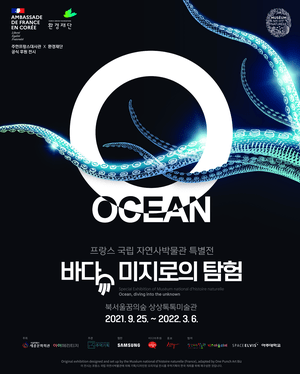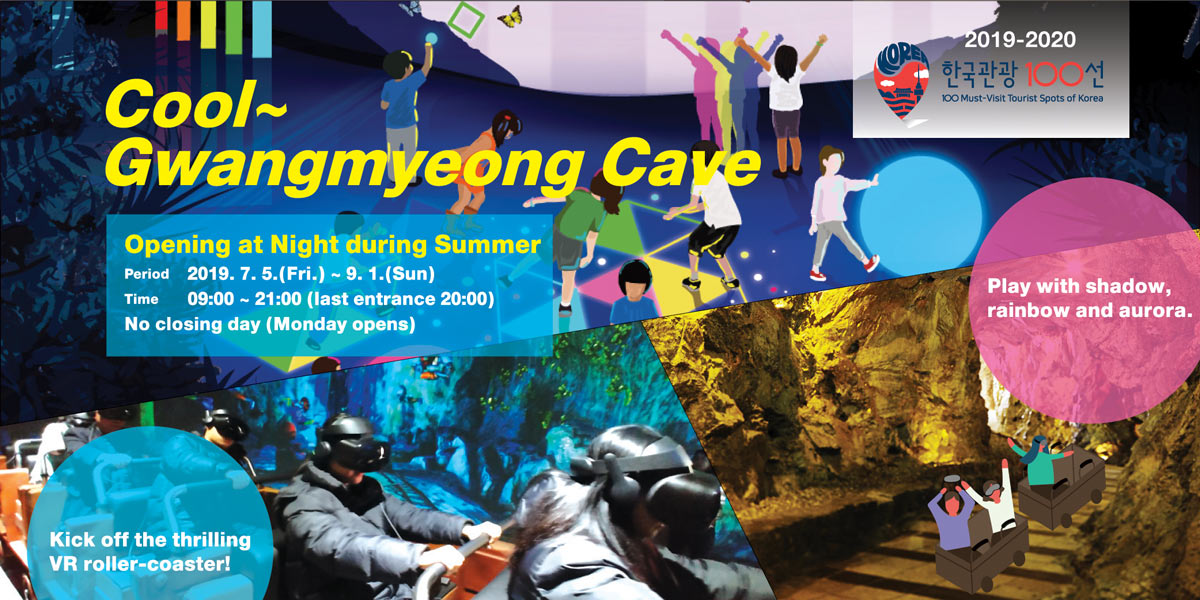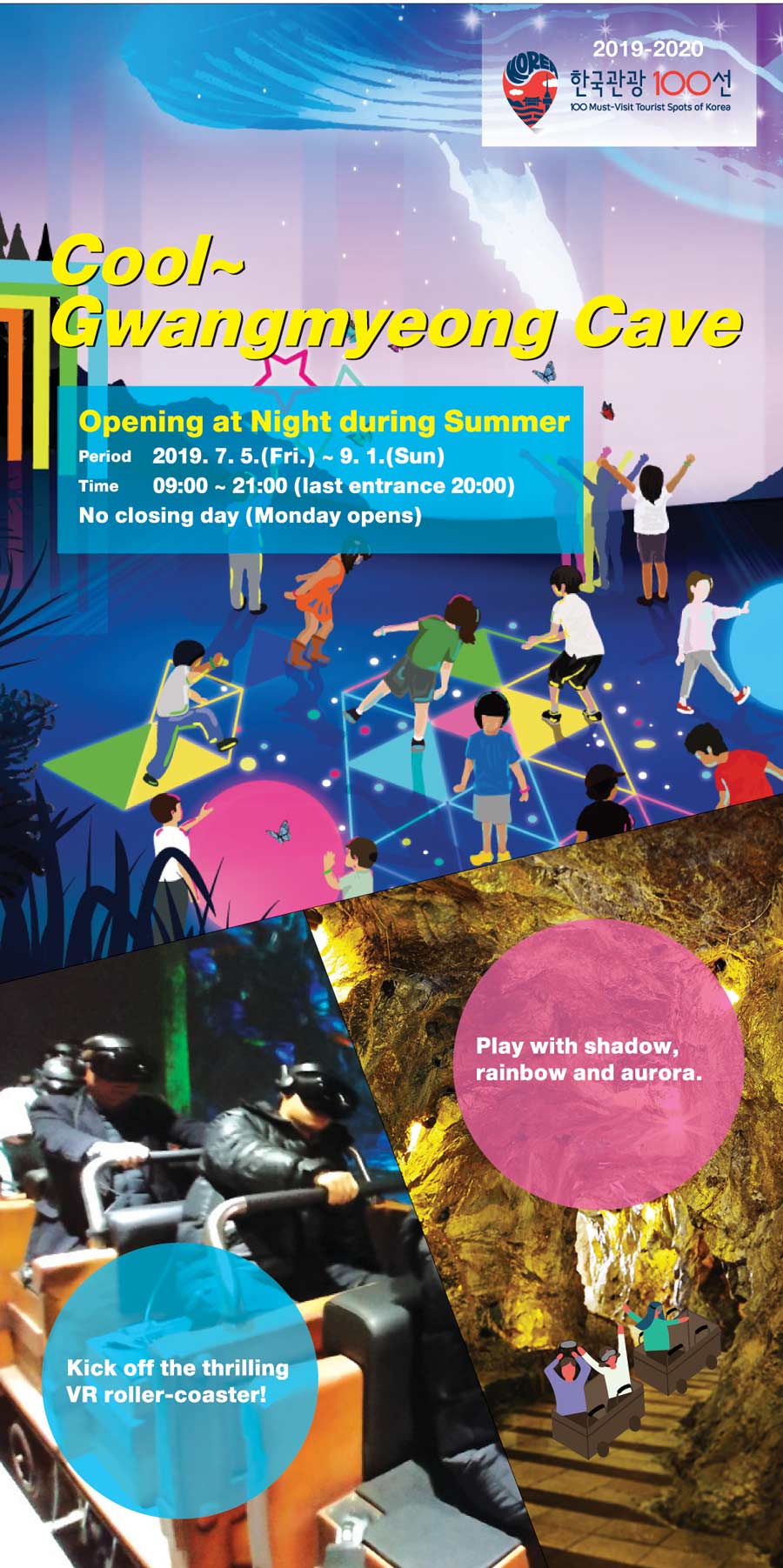Arts & culture
Ocean,
diving into the unknown
Special Exhibition of Muséum national d’histoire naturelle


A special exhibition of the Muséum national d’histoire naturelle introduced for the first time in Korea! This exhibition held in Paris in 2019 and directly curated by the Muséum national d’histoire naturelle has been renewed and introduced for Korea. The theme is the ocean.
The vocation of the Muséum “educate by fascination with wonder” clearly demonstrates the character of this exhibition. It introduces information about the deep sea through easy-to-understand multimedia, and displays it with various graphics and explanations. However, the message of this exhibition to protect the earth’s environment is very deep and important.
The Ocean, a world to explore
The ocean is a single, continuous, global entity. It covers 71% of the surface of our planet but remains largely unexplored. Today we know more details about the surface of Mars than we do about the ocean’s depths! To meet the deep-sea, scientists have invented a range of techniques and effective tools over the centuries.
The dream of discovering the underwater world harks back to ancient times even if the first diving bells only appeared in the 16th century. After this, more or less successful attempts to conquer the ocean’s depths followed. Here we present a few milestones about this great human and technical adventure toward the ocean. For the last few decades, the needs of science, as well as those of the military and industry, have led to the development of a whole range of increasingly sophisticated devices. Along with the development of manned underwater vehicles, increasingly autonomous unmanned craft have appeared such as subsea robots or deep-sea floor observatories. Seeing the millions of square kilometers left to explore, the undersea adventure is by no means over and will continue to make us dream in the future!
The Muséum is out there!
Bio-diversity collected by the Muséum. Courtesy <Ocean, diving into the unknown> Organizer OPAB
We can observe many kinds of the marine species collected by the Muséum in various medias in this exhibition. The marine environment hosts fewer species than the terrestrial environment but includes a much greater number of lineages, which are differentiated by very distinct anatomical structures. Through its research and its many oceanic expeditions, the Muséum actively participates in recording marine biodiversity.
In the tradition of the first expeditions conducted in the middle of the 19th century, the Muséum organizes many major oceanographic missions. These concentrate on the less explored regions rich both in biodiversity and with groups of organisms belonging to the least-known lineages. The Muséum uses a variety of methods to collect specimens of every size and from all identified habitats.
- 2 million known species on our planet and 235,000 of them in the ocean.
- 1.7 to 2.3 million marine species still to be discovered.
- 2,000 new marine species discovered and named each year.
- 20% of marine species described these last 10 years thanks to the Muséum’s expeditions.
And also, since the 1960s, the Muséum has actively participated in the exploration of Antarctic marine life through research programs. The scientists’ work consists of collecting fauna and flora samples. The material is then sifted, sorted and labelled in a field laboratory. Photos are taken of the specimens to keep a record of their appearance. Tissue samples are also taken for later genetic analysis.
Above the collection, message as a vaccination against indifference.
A new approach to the ocean is indispensable today, and it can lead to major discoveries! The study and observation of marine organisms have already led to the identification of molecules with properties promising for humanity, as well as inspiring a multitude of innovations in extraordinarily diverse fields. And there is still much to be discovered!
However, we should think of nature as an infinite source of inspiration to be protected at all cost! This is the approach developed by bio-inspiration: to find inspiration in nature, particularly in the extraordinary diversity of the marine environment, to find answers to the issues that confronted it long before us.
If the ocean is a source of surprises, it is also seriously endangered. We can meet three prominent figures with a privileged connection to the marine environment to tell us about their experiences, their memories and their concerns for the future in this exhibition.
Photos from the Exhibition
Multimedia experience - Nautilus manned submersible. Courtesy <Ocean, diving into the unknown> Organizer OPAB
Giant squid. Courtesy <Ocean, into the unknown> Organizer OPAB
The giant squid is an animal that breaks all records. Females reach the most impressive sizes: as much as 18m for the largest known specimen! An active carnivore, the animal extends its very long tentacles to attack and immobilize its prey. Its eye has a diameter of 25cm and is the largest in the animal kingdom. In the darkness of the ocean’s depths, this particularly sensitive organ is very useful for hunting at a distance or escaping from predators.
Regalec. Courtesy <Ocean, into the unknown> Organizer OPAB
The oarfish looks like a long silver ribbon with a shock of hair on its head, and seems to have come straight out of an imaginary tale. Due to its rarity and wide geographic distribution, this animal continues to remain very much a mystery for scientists who often have access only to beached individuals.
Coelacanthe. Courtesy <Ocean, into the unknown> Organizer OPAB
The coelacanth was thought to have been extinct for 70 million years until a live specimen was discovered in 1938. An active search for other specimens and rewards for fishermen: every method was employed to find out how coelacanths had been able to escape attention for so long.
Ocean, into the unknown
Address
Duration
contact
SangSangTokTok Museum
North Seoul Dream Forest
173, Wolgue-ro, Gangbuk-gu,
Seoul, 01228
Korea
September 25, 2021~ March 6, 2022
070-8800-6335
Operating time
10am to 6 pm (last admission 5pm)
*Parts of the proceeds from this exhibition will be donated to the Environment Foundation.
Find us
© Copyright 2021 ECCK · All Rights Reserved












